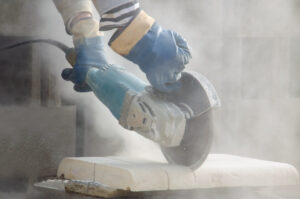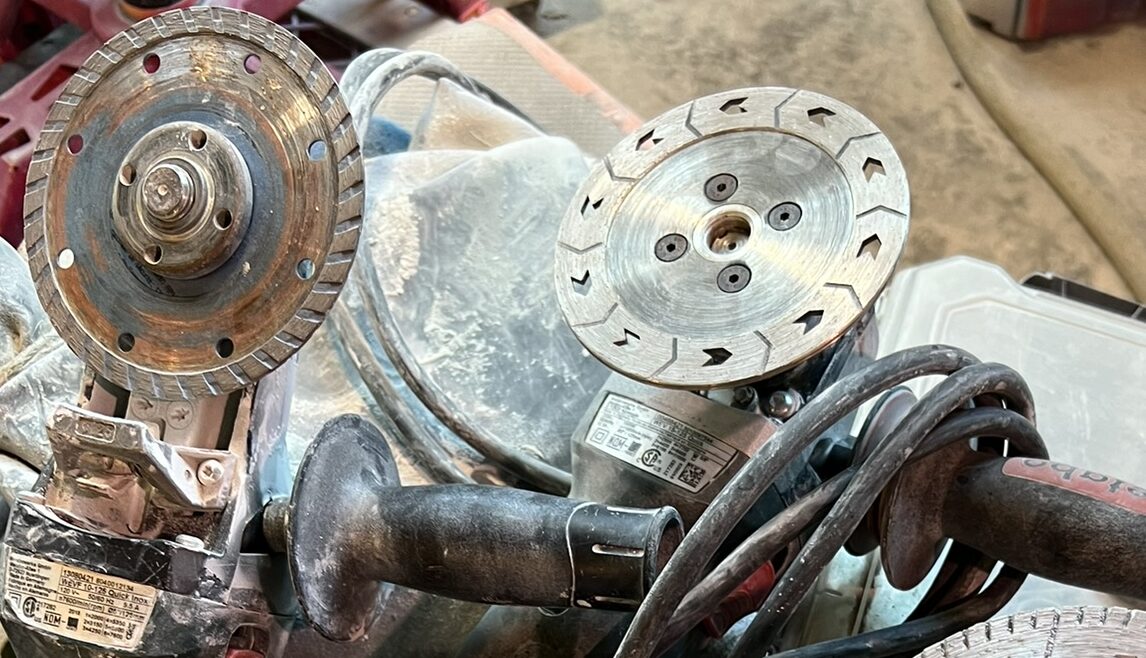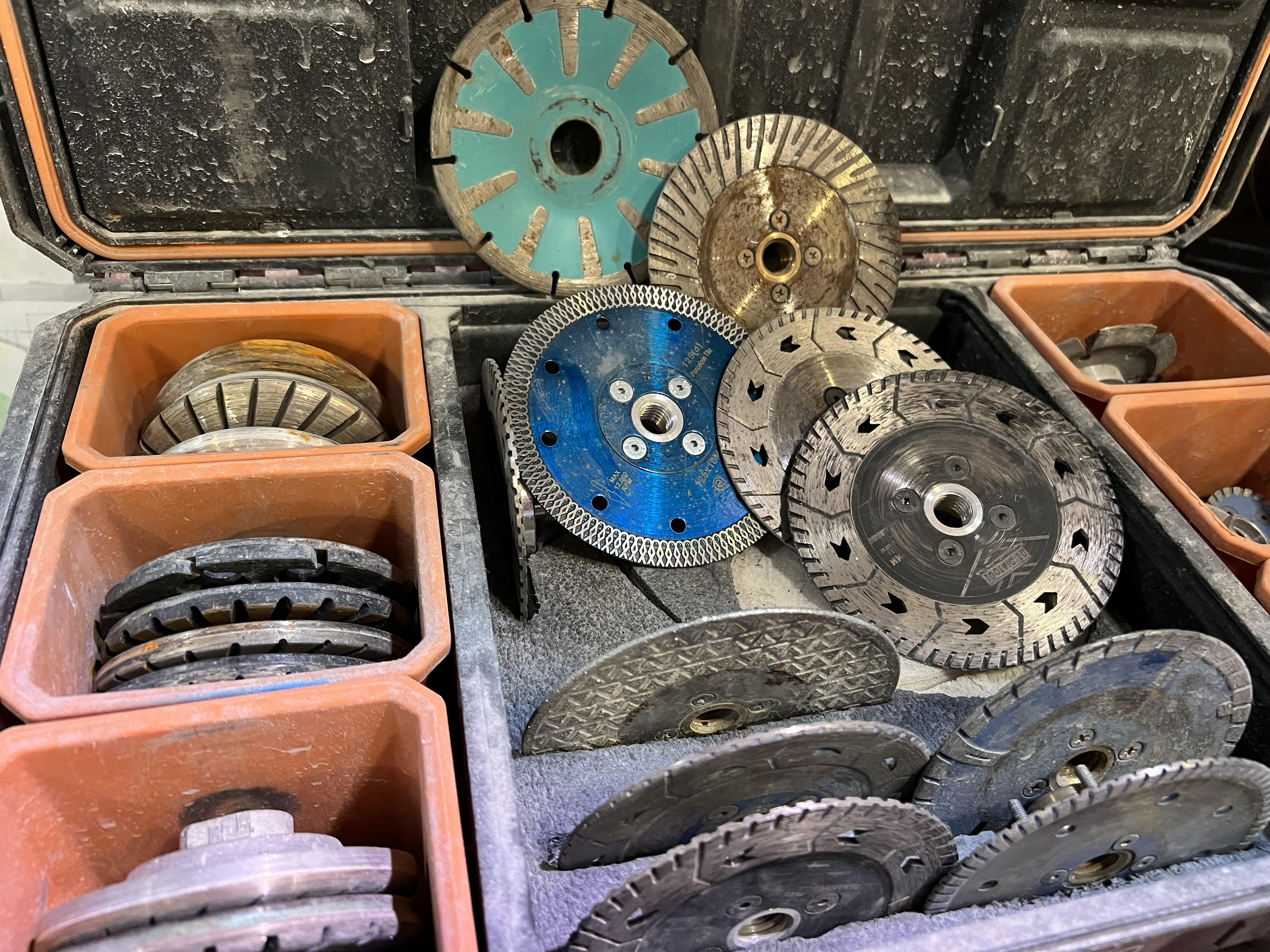
Home » Carve » Tools » Power Carving Tools » Angle Grinders
Part of this material I used in the 20 hour granite course I taught at Pratt. Most of the info is from Tom Urban’s workshop at Camp Brotherhod, some from a workshop by Don Ramey that Hank Nelson organized at my place years ago. If you find anything useful, please add it to the article – Kirk

4-5 inch dry-cut diamond blades designed to run at about 10K RPM, which is speed of right angle grinders. For sufficient power, look for high 6 amp range or greater. Hitachi and DeWalt models hold up well. For variable speed, recommend Metabo or Makita. Avoid Bosch or Milwaukee. Larger blades (7-8 inches) run about 5K RPM, which is speed of 7-inch grinders or worm drive circular saws. Worm drive saws can be set up to run wet, keep blades cooler.
Grinder maintenance: Blow out grinders 2x daily. Blow outside, inside, and then blow out while running.

Turbo blades preferred. Mount blade so direction of turn matches direction on grinder. Segmented blades cut faster, but more chatter, more chance for segments to come loose. Blades with holes near the edge tend to cool better than ones with ridges going into core. Granite blades have different matrix than marble, wear differently—important to get right type. Cheap blades are usually inadequate, Alpha and Pearl are good quality blades. Blades can become glazed through use and need to have matrix opened to expose new diamonds (sometimes true for new blades). Tom Urban from U of O recommends cutting into cement block, then red brick as best method to open blade.
Cut without forcing blade. Cut from left to right so direction of blade turn is into cut. Less tendency to kick back. If it does kick doesn’t go far. Take saw out of cut for return. Trow & Holden recommend letting blade cool by backing off pressure every 10-15 seconds and letting run up to speed. Take cuts down to about 1-2 inches.
Separation of cuts (fret thickness) determined by depth of cut; the shallower the cut, the closer together they should be placed. Frets broken out by hand hammer and point or chisel (T&H will grind beveled edge on offset hand set) or with air hammer and rough out machine chisel. Next set of frets can go at right angle, shallower & closer together. Use oblique light to see if saw kerfs all come to desired surface before popping out fins last time.

We need some kind of descriptive text here.